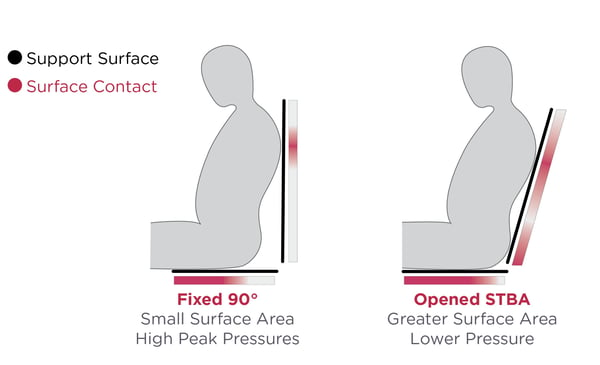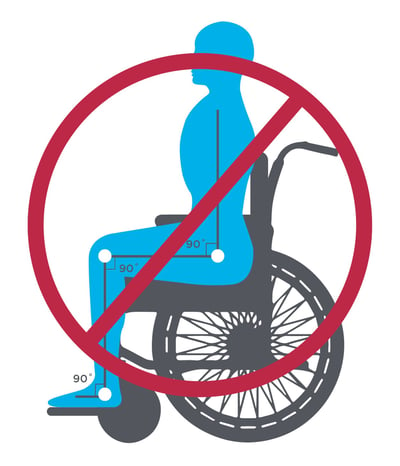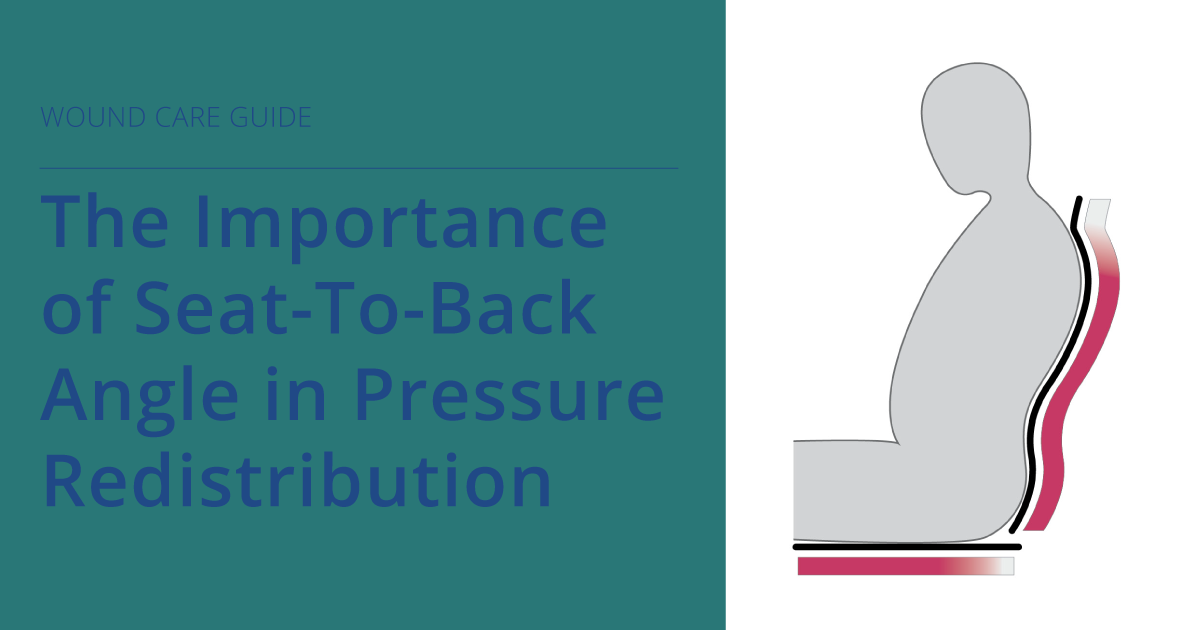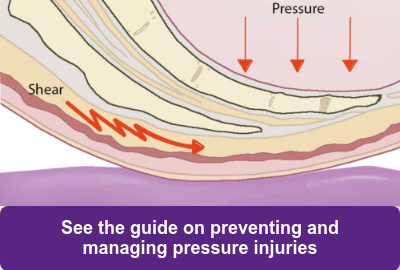Part 9 in our Pressure Management Guide series. See Part 1, Part 2, Part 3, Part 4, Part 5, Part 6, Part 7, and Part 8. Check out our comprehensive, digital Pressure Management Guide.
What is seat-to-back angle (STBA) and how does it affect pressure redistribution?
STBA is too often misunderstood to be tilt. IT IS NOT tilt but rather the relative angle between the seat and the back support that can be opened or closed to accommodate for ROM limitations. This allows for more surface area contact between the patient and the support surfaces (back supports and cushions) for pressure redistribution.
Look at the difference opening STBA can make in the amount of contact made with the support surfaces for a patient with the same ROM limitation.
In this example, let’s say that the resident cannot achieve 90 degrees at his hips, and he can only tolerate 105 degrees of hip flexion. If we attempted to place this resident in a chair with a fixed 90 degree angle, the following consequences could occur:
- he would never be able to get his hips all the way back in the chair,
- he would have less surface contact with the seat support surface ( the cushion),
- he would not sit in the pelvic well of the cushion, minimizing the effectiveness of whatever cushion you choose
- he would increase the likelihood of sacral sitting and sliding forward in the chair
- he would sit right on the bony prominences, increasing the likelihood of a pressure injury.
If we consider the importance of opening STBA, we could minimize the possibility of the above risk.

A common question I get asked is “How do we adjust STBA?”
There are two possibilities that can be utilized independently or in conjunction:
- Use a wheelchair model that has built-in STBA adjustability through the back canes.
- Use a specialized back support that can change STBA through the hardware.
What do we gain by adjusting STBA?
Utilizing chairs with fixed 90 degree angles increases the risk of sliding into postural abnormalities, if the patient cannot tolerate sitting upright at 90 degrees at the hips.

Therefore, opening or closing STBA according to the patient’s ROM will allow for:
- maximum contact with the back and seat surface
- pressure redistribution off of the bony prominences
- the pelvis to reside in the intended area of the cushion
- stabilization at the pelvis and spine
Check back next week when we'll be discussing how specialized back supports allow for immersion and envelopment of abnormal curvatures.
Want to learn more about pressure management and the prevention of pressure injuries? See our comprehensive digital Pressure Management Guide.

Ana Endsjo, MOTR/L, CLT
Clinical Education Manager LTC Division
Ana Endsjo has worked as an occupational therapist since 2001 in a variety of treatment settings. She has mainly worked with the geriatric population, dedicated to the betterment of the treatment of the elderly in LTC centers. Her focus has been on seating and positioning and contracture management of the nursing home resident. With this experience, her hope is to guide other therapists, rehab directors, nurses, and administrators through educational guides, blogs, webinars, and live courses in her role as Clinical Education Manager for the long term care division.

